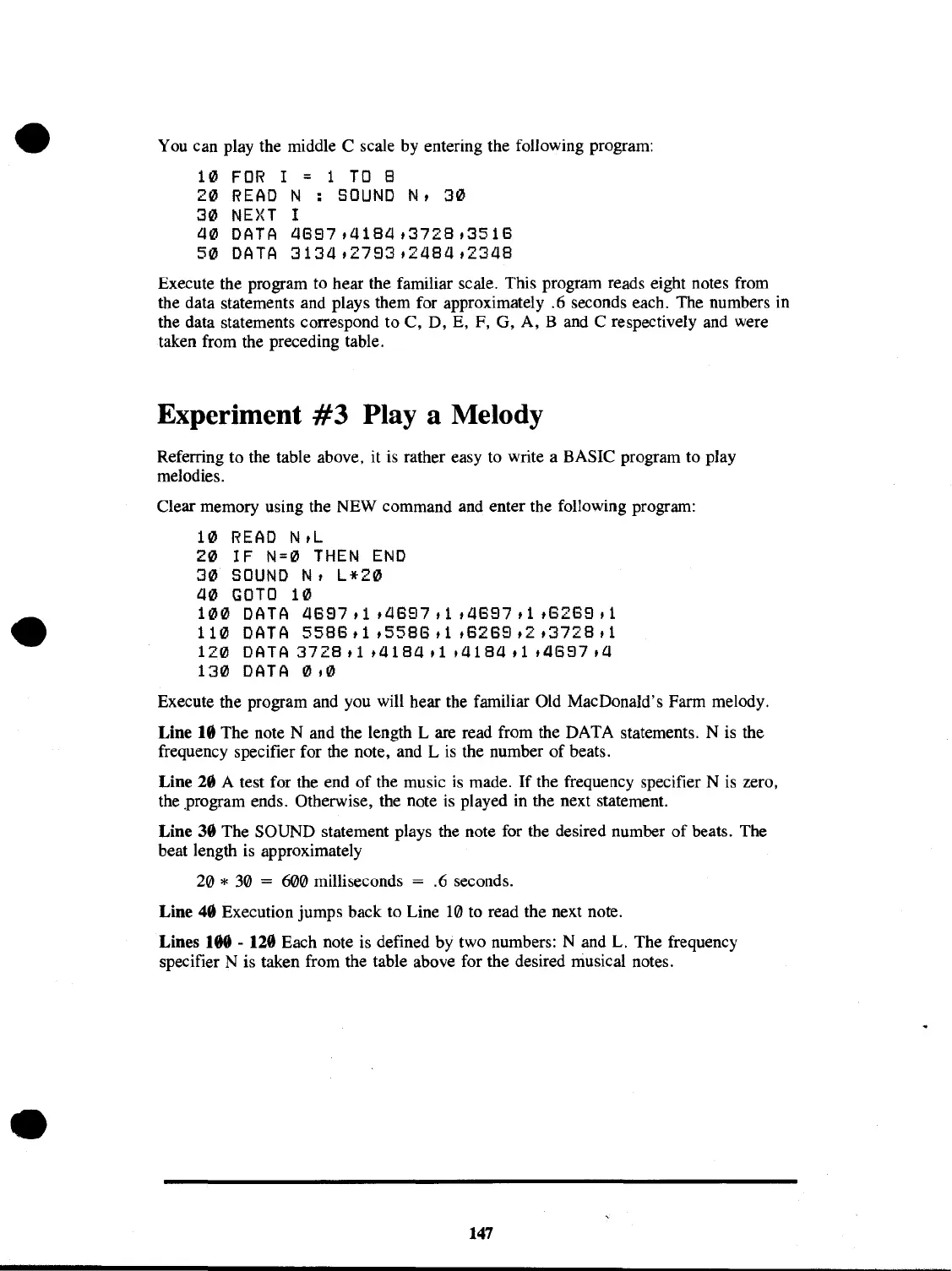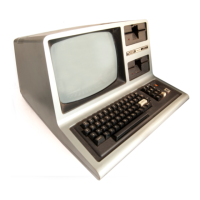You can play the middle C scale by entering the following program:
10
FOR
I = 1
TO
8
20
READ
N :
SOUND
N,
30
30
NEXT
I
a0
DATA
a687,a18a,3728,3516
50
DATA
313a,2783,2a8a,23a8
Execute the program to hear the familiar scale. This program reads eight notes from
the data statements and plays them for approximately .6 seconds each. The numbers in
the data statements correspond to
C,
D,
E, F,
G,
A, B and C respectively and were
taken from the preceding table.
Experiment
#3
Play a Melody
Referring to the table above. it is rather easy to write a BASIC program to play
melodies.
Clear memory using the NEW command and enter the following program:
10
READ
N,L
20
IF
N=0
THEN
END
30
SOUND
N, L*20
a0
GOTO
10
100
DATA
a687,
1
,a687,
1
,a687,
1
,6268,1
110
DATA
5586,1
,5586,1
,6268,2,3728,1
120
DATA
3728
t1
,a18a
Ii
,a18a
Ii
,a687
,a
130
DATA
0,0
Execute the program and you will hear the familiar Old MacDonald's Farm melody.
Line
18
The note N and the length L are read from the DATA statements. N is the
frequency specifier for the note, and L
is
the number
of
beats.
Line 28 A test for the end
of
the music
is
made.
If
the frequency specifier N is zero,
the .program ends. Otherwise, the note is played in the next statement.
Line
38
The SOUND statement plays the note for the desired number
of
beats. The
beat length is approximately
20 * 30 = 600 milliseconds = .6 seconds.
Line 48 Execution jumps back to Line
10
to read the next note.
Lines 188 - 128 Each note is defined by two numbers:
Nand
L. The frequency
specifier N is taken from the table above for the desired musical notes.
147

